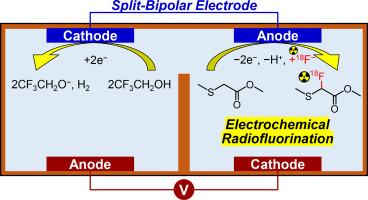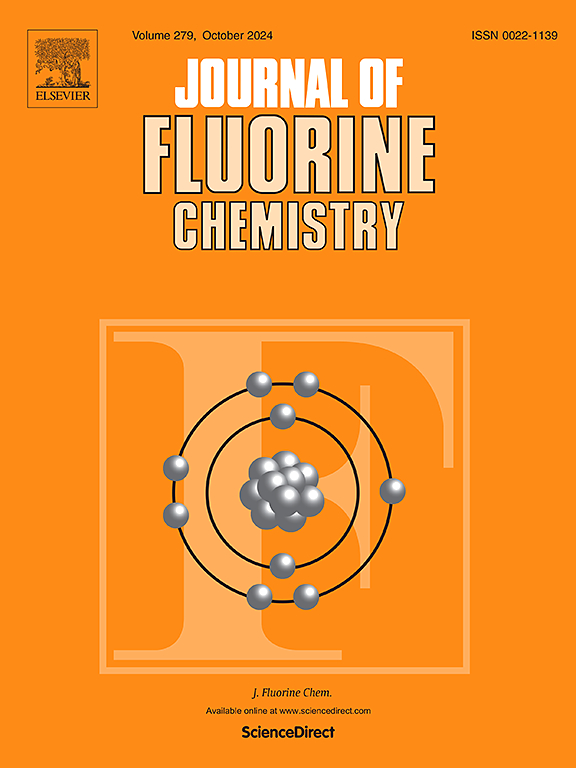Electrochemical radiofluorination using a split-bipolar electrode
IF 1.9
4区 化学
Q3 CHEMISTRY, INORGANIC & NUCLEAR
引用次数: 0
Abstract
Electrochemical (radio)fluorination (ECF) is a versatile approach for nucleophilic radiofluorination of electron-rich compounds such as thioether derivatives. However, ECF generally requires high concentrations of supporting salts, which leads to low molar activity (Am) of the final product due to undesired contamination with [19F]F– ions. Here, we demonstrate the first example of radiofluorination using a split bipolar electrode (s-BPE) platform with low concentration of supporting salt. Under optimal reaction conditions, the ECF of methyl (methylthio)acetate (MMTA) using s-BPEs provided [18F]F-MMTA with radiochemical conversion of up to 70 % and high molar activities (28–43 GBq/μmol; 0.74–1.1 Ci/μmol), with approximately 5 mM of tetrabutylammonium perchlorate as supporting electrolyte.

使用分裂双极电极进行电化学放射性氟化
电化学(放射性)氟化(ECF)是对硫醚衍生物等富电子化合物进行亲核放射性氟化的一种多功能方法。然而,ECF 通常需要高浓度的支持盐,由于[19F]F- 离子的意外污染,导致最终产物的摩尔活性(Am)较低。在此,我们首次展示了使用低浓度支持盐的分离式双极电极(s-BPE)平台进行放射性氟化的实例。在最佳反应条件下,使用 s-BPE 的(甲硫基)乙酸甲酯(MMTA)ECF 提供了[18F]F-MMTA,放射化学转化率高达 70%,摩尔活度高(28-43 GBq/μmol;0.74-1.1 Ci/μmol),支持电解质为约 5 mM 的高氯酸四丁基铵。
本文章由计算机程序翻译,如有差异,请以英文原文为准。
求助全文
约1分钟内获得全文
求助全文
来源期刊

Journal of Fluorine Chemistry
化学-无机化学与核化学
CiteScore
3.80
自引率
10.50%
发文量
99
审稿时长
33 days
期刊介绍:
The Journal of Fluorine Chemistry contains reviews, original papers and short communications. The journal covers all aspects of pure and applied research on the chemistry as well as on the applications of fluorine, and of compounds or materials where fluorine exercises significant effects. This can include all chemistry research areas (inorganic, organic, organometallic, macromolecular and physical chemistry) but also includes papers on biological/biochemical related aspects of Fluorine chemistry as well as medicinal, agrochemical and pharmacological research. The Journal of Fluorine Chemistry also publishes environmental and industrial papers dealing with aspects of Fluorine chemistry on energy and material sciences. Preparative and physico-chemical investigations as well as theoretical, structural and mechanistic aspects are covered. The Journal, however, does not accept work of purely routine nature.
For reviews and special issues on particular topics of fluorine chemistry or from selected symposia, please contact the Regional Editors for further details.
 求助内容:
求助内容: 应助结果提醒方式:
应助结果提醒方式:


